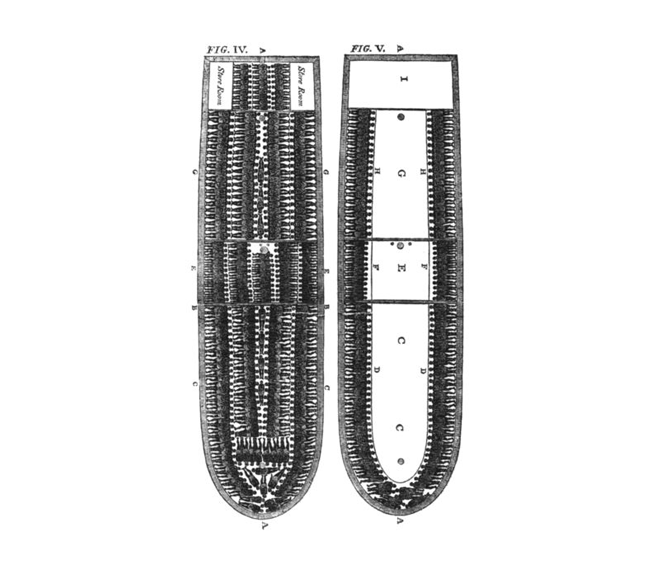Western modernity, indeed much of Western culture, has been predicated on a binary separation between race and technology. In this dualism, the former is hyper-organic and primitive, and the latter inorganic and hyper-rational; where the former is the alleged source of rhythm, sex, and the body, the latter affirms abstraction, industry, and its complex methods of representation. This admittedly simplistic opposition belies or betrays much. For one thing, each side of the binary has always been dependent on the other for the contrast, which produces meaning as well as for those relationships of power that materialize meaning. For another, this dependence invites intimacy: after all, technology is as productive of race as race is desirous of technology.
This collusion between the two regimes of knowledge is particularly salient in the 19th century. That is when our contemporary understanding of race and technology were stabilized after having been forged in the crucible of the biological sciences, urbanization, and imperial expansion. And two of the most pressing concerns in the trans-Atlantic world of that time ‒ crucial to establishing how the separation between race and technology becomes naturalized ‒ were industrialism and slavery. Diagram of a slave ship from the Atlantic slave trade 1790/1791. Public Domain, Wiki Commons.
Diagram of a slave ship from the Atlantic slave trade 1790/1791. Public Domain, Wiki Commons.
Yet those oppositions would simultaneously blend, beginning a process that can be traced via a series of distinct technologies. First, the slave ship, which on the one hand denatured black slaves while expanding the material bounds and needs of modernity, as well as its conceptual and social possibilities; second, the plantation, what Caribbean thinkers from CLR James to Antonio Benítez Rojo and Sylvia Wynter have proclaimed central to the construction of regimented, modern subjectivities in advance of industrial processes; and, thirdly in America, the cotton gin, which helped engineer the industrial revolution while entrenching slavery via those very industrial processes.
As the aforementioned thinkers have claimed or suggested, these “machines” were creolized by their products, as impacted by the presence of blacks as well as the racism that rendered them dependent on specifically African bodies. In their interaction with these machines, blacks were not negligible to their function and productivity. The history of innovation is also a history of attempts to modify technology in order to respond to the resistance of blacks as well as adapting or appropriating their own contributions to the development of these technologies. This is as true for how African traditions of agriculture impacted plantations as it is for how black sounds forced recording technologies to expand their possibilities.
Black bodies matter in these equations not only due to their conceptual flexibility as other, as nature, as primitive; but also their economic fungibility, as labor, as property, as capital. But why the black body specifically? Why this particular racial configuration given the plurality of differences available to and produced by Western Modernity and its colonial infrastructure? Because under the sway of the biological sciences blacks were deemed less than human but closer to animal; or not quite animal but something in between. This ambiguity would be materialized and fixed in 19th American law.
Yet we must add to this ambiguity, this crisis of categories. We must add to what Caribbean poet Aimé Césaire called “thingification.” Given that slaves were essentially prosthetics for a white, allegedly more rational intelligence and deemed incapable of reason, their status hovered in a zone between human, animal, and also machine.
It should then be no surprise to discover that in the evolution of technology one can find moments of fusion where race is either, grafted onto the machine or racial meanings used to render inorganic life as human. Understanding creolization as a process that occurs as much between races or cultural groups as it does between the putatively human and inhuman (or between human beings and different forms of technology) these fusions are inevitable. The value of race also becomes clear: those deemed marginal to technological development are ever deployed to provide a contrast for a fetishized newness (or modernity). And those who have been excluded from “the human” are ever evoked to give it value.
Race indeed haunts technology, and has always been there in how machines are embodied, from science fiction to cybernetics. Here a few examples that never grow mundane. The first comes from a 19th work often figured as one of the earliest articulations of the possibility of a sentient technology: Samuel Butler’s Erewhon: or, Over the Range (1872) and its precursor essay, “Darwin among the Machines” (1863). Not only is this where it is first argued that machines were too subject to evolutionary processes, but that upon achieving self-awareness would inevitably kill their masters. Thus begins the most reliable trope in Western science fiction: the machine uprising.
